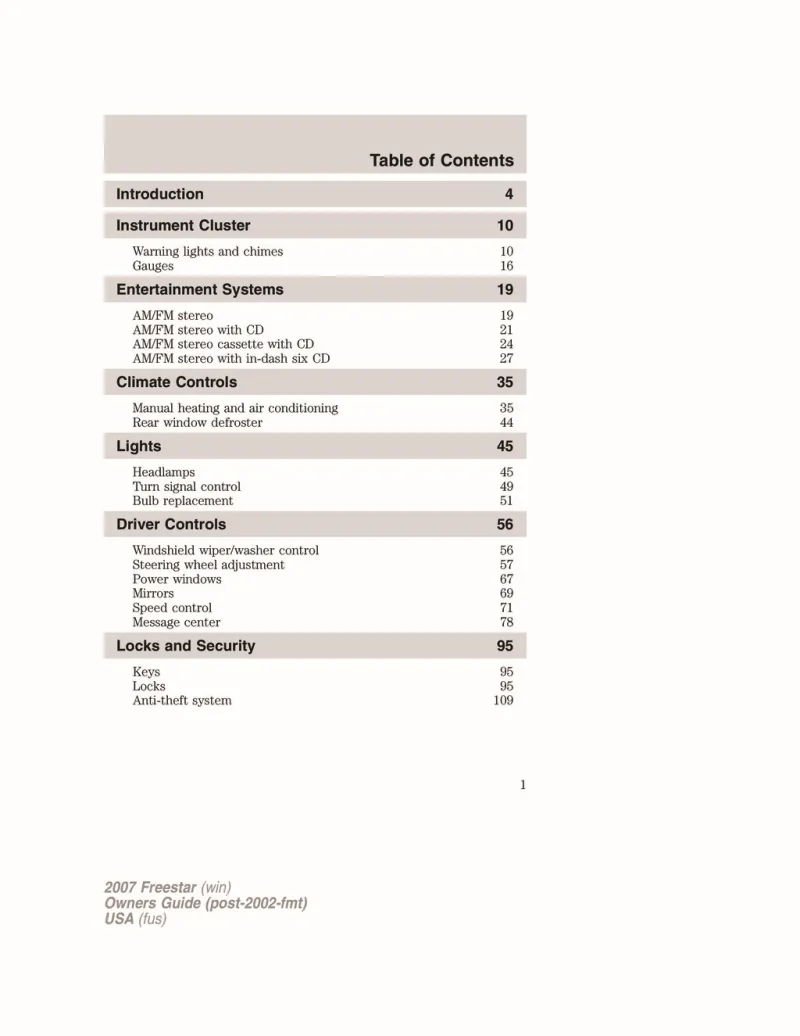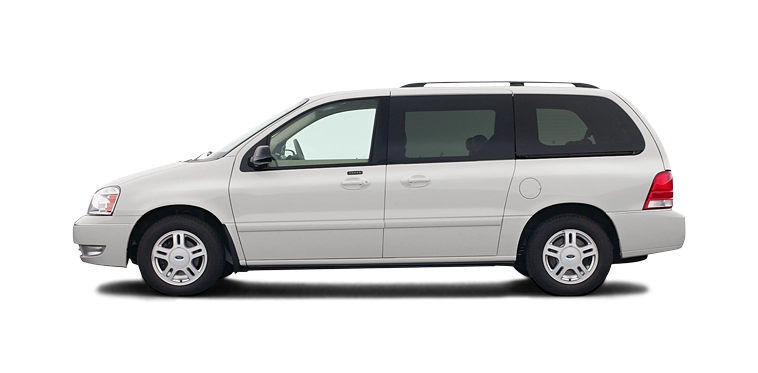2007 Ford Freestar Owner's Manual

Table of Contents
2007 Ford Freestar Overview
Introduction
The 2007 Ford Freestar is a versatile minivan designed with family comfort and practicality in mind. Engineered to offer a smooth ride, spacious interior, and an array of safety features, the Freestar stands out as an ideal choice for parents and large families. Whether you are embarking on a road trip or just juggling daily activities, the 2007 Freestar provides the adaptability and reliability needed for any journey.
Powertrains
Under the hood, the 2007 Ford Freestar comes equipped with two capable V6 engine options. The base engine is a 3.9-liter V6 producing 193 horsepower, providing a balanced performance for everyday driving. For those seeking extra power, an available 4.2-liter V6 engine generates 201 horsepower, allowing for confident acceleration and hauling capabilities. Both powertrains are paired with a smooth-shifting four-speed automatic transmission, offering dependable handling in various driving conditions.
Trims
The 2007 Ford Freestar is available in several trims, including the base SE, the mid-level SEL, and the more upscale Limited. Each trim level offers an expanding range of features, from essential comforts to premium upgrades. With options such as leather seating, power sliding doors, and a premium audio system, buyers can choose the Freestar that best fits their lifestyle and budget.
Features
Family-friendly features abound in the 2007 Freestar, with seating for up to seven passengers and configurable seating arrangements to maximize cargo space. Notable features include standard dual-zone climate control, an available rear-seat entertainment system, and a host of safety equipment, such as anti-lock brakes and multiple airbags, ensuring peace of mind on the road.
Owner's Manual
The 2007 Ford Freestar Owner's Manual is a comprehensive resource providing valuable information for maintenance, operation, and troubleshooting. It details essential practices for keeping the vehicle running smoothly while also offering safety tips, specifications, and warranty information. A well-versed guide, the owner's manual ensures that Freestar owners are well-equipped to enjoy their driving experience fully.
User manual download
The Ford Freestar owner manual for the 2007 model year is to be found in PDF downloadable format on this page. The owner manual for the model year 2007 is free and in English, but the repair manuals are usually not easy to get and may cost more.
Manual Questions
Fill the form below and someone will help you!

